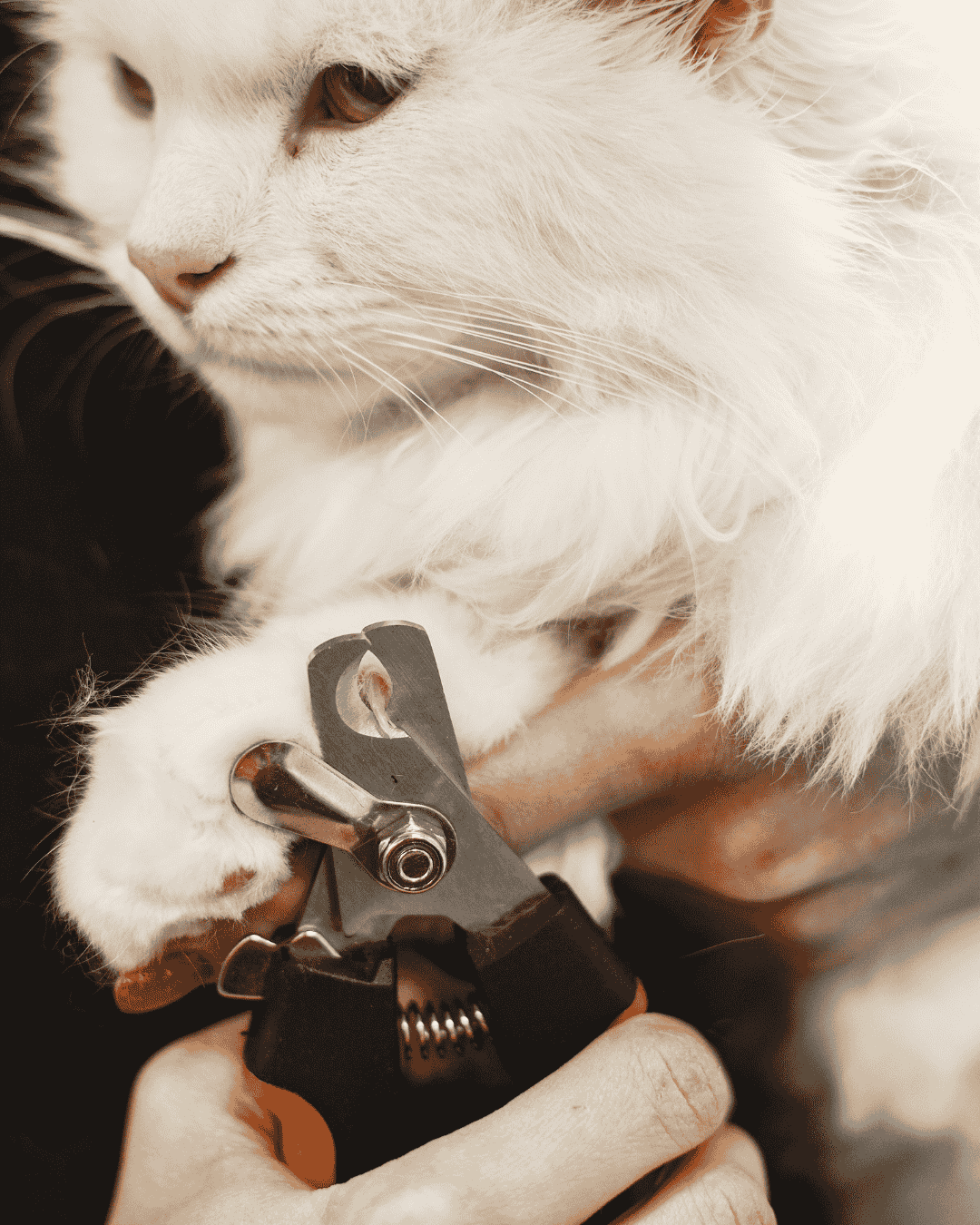If you’ve ever attempted to trim your cat’s nails and walked away with scratches and hurt feelings – you’re not alone.
Cat nail trimming can be intimidating, but it doesn’t have to be. With the right tools, timing, and technique, it can become a regular part of your cat care routine (without the drama).
Let’s walk you through the entire process – and when to let the professionals at PawBasic in Mississauga step in.
🐾 Why Do Cats Need Nail Trims?
Unlike outdoor cats who naturally wear their claws down, indoor cats can develop:
- Overgrown nails that curl into paw pads
- Snags on furniture, carpets, or even you
- Pain or mobility issues (especially for senior cats)
Regular trimming helps keep their claws healthy, sharp (but not too sharp), and safe.
Related: Essential Cat Grooming Products You Need
✂️ How Often Should You Trim Your Cat’s Nails?
Every 2–4 weeks is ideal, depending on their lifestyle and scratching habits. If you hear clicking on hard floors or see your cat catching on fabric, it’s time.
🧰 Tools You’ll Need
Keep it simple. You’ll want:
- Cat-specific nail clippers (scissor-style or guillotine-style)
- Styptic powder (just in case you nick the quick)
- Treats for rewarding good behaviour
Avoid using human clippers or dog clippers – they’re too bulky or dull for feline claws.
🧘♀️ Step-by-Step: How to Trim Your Cat’s Nails
- Find a calm time. Post-meal or after a nap is best.
- Gently press the paw pad to extend the claw.
- Clip only the sharp tip. Avoid the pink quick inside.
- Give praise and treats after every paw or session.
- Don’t force it – try one paw per day if needed.
First time trimming? Our Kitten Grooming for Beginners Guide can help.
😿 Signs It’s Time to Leave It to a Pro
- Your cat hisses, bites, or panics
- Nails are thick, dark, or hard to see the quick
- You’re worried about causing pain or injury
At PawBasic, our groomers are trained in low-stress, cat-friendly handling. We make nail trims quick, safe, and tear-free – for both you and your feline.
➡️ See what other pet parents say
Book a Cat Nail Trim in Mississauga
Nervous about trimming your cat’s claws at home? We’ve got you.
👉 Book Your Cat’s Nail Trim at PawBasic
Already a client? Leave us a review if you loved your visit – we read every one 🐾




